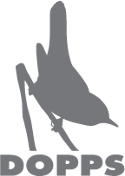- The freshwater marsh, consisting of 13 hectares of wet meadows and 10 hectares of open water areas with reed bed and nesting islets was created within the project area, while additional 3,5 ha were created outside the project area. The first breeding season brought many birds to nest in the newly established area, including 5 breeding pairs of Little Bittern (Ixobrychus minutus), at least 15 pairs of Great Reed Warbler (Acrocephalus arundinaceus), 20 pairs of Reed Warbler (Acrocephalus scirpaceus) and about 15 pairs of Little Grebe (Tachybaptus ruficollis). The next years saw a further increase of the breeding bird populations.
- Approximately 225,000 cubic meters of mud were dredged from the lagoon: 185.000 cubic meters of organically polluted mud was removed to the disposal site, which resulted in reducing the eutrophication and organic pollution, enable water circulation inside the lagoon and increase of bioproduction, which all contributed towards improved ecological conditions in the lagoon and substantially reduced risk of botulism.
- The remaining 40.000 cubic meters of non-polluted mud was used tocreate 20 ha of mudflats and nesting islets in order to create conditions for the habitat types, listed on Annex I of the EU Habitat Directive as well as provide breeding and feeding grounds for endangered breeding birds,, such as Kentish Plover (Charadrius alexandrinus), Black-winged Stilt (Himantopus himantopus), Common Tern (Sterna hirundo), Little Tern (Sterna albifrons).
- The brackish lagoon of over 71 ha has been restored into a diverse mixture of already existing or developing 5 Natura 2000 habitat types: Mudflats and sandflats not covered by seawater at low tide (Natura 2000 code 1140), Salicornia and other annuals colonizing mud and sand (Natura 2000 code 1310), Mediterranean salt meadows (Juncetalia maritimi) (Natura 2000 code 1410), Mediterranean and thermo-Atlantic halophilous scrubs (Sarcocornetea fruticosi) (Natura 2000 code 1420) and Coastal lagoons (Natura 2000 code 1150*). Additionally, the Ara mouth area has a good potential to develop into the habitat type Estuaries (Natura 2000 code 1130).
- Water inflow improved upon several activities, including two most important ones: cleaning of the Rižana river left discharging channel Ara outlet and riverbed (Ara is the only freshwater source for the reserve) and mounting of the sluice system at the sea channel, which will enable full water level control in the future.
- The educational and awareness-raising activities within this project have brought the future functions of the reserve near the local people. Many of them have managed to recognize its real value in between and have become the active holders of the part of the responsibility for the nature conservation in their adjacency.
- Over two-kilometer-long circular education trail was constructed, laid out along the border of the freshwater part of the reserve. Ponds of various sizes and forms were created along the trail, which are now inhabited by invertebrates and amphibians to help the visitors get a closer look at the life in the marsh. The screening embankments were constructed along the newly formed circular education trail, preventing disturbance of wildlife caused by visitors.
- The project substantially contributed to the effective implementation of nature protectioncontrol, another important activity in preventing the disturbance, as the first full-time warden of the reserve has been employed through European funding.
- Regular monitoring has been carried out throughout the project period on bird populations, water quality and also on hydrological parameters, necessary to establish the future lagoon organisation and management. The ornithological monitoring proved the excellent results of this project through the increase of bird populations during the project period and increase of the number of species and populations of the breeding birds in the first breeding season after the restoration. Another important indicator of the success of restoration is research and monitoring conducted in the years following the completion of the work, which also confirm that the works carried out were relevant and sufficient to achieve the objectives of the project.
- Firm and successful partnership between DOPPS – BirdLife Slovenia and the Ministry of the Environment and Spatial Planning, which is quite unique in the field of co-operation between governmental and non-governmental sectors in Slovenia, was one of the basis of the project success. That’s how we managed to implement a pilot project, which doubtlessly ranks among top ten restoration projects of degraded natural areas in the Mediterranean part of Europe. On the other hand, existing BirdLife partnership and newly established Adriawet network, where the beneficiary actively participated brought additional value-added to the project through knowledge and expertise gained.
- Reserve Management Plan for the period 2007-11 is the most crucial document for the future of the reserve, as it guarantees sustainability and continuation of this project. On 30.8.2007, it was adopted by the Government of the Republic of Slovenia in a form of a legal act – a Decree on Program of conservation and development of Škocjanski zatok Nature Reserve for the period 2007-11 (Odlok o programu varstva in razvoja naravnega rezervata Škocjanski zatok za obdobje 2007 – 2011).
List of key deliverables which are available in the gallery:
- Layman’s Report
- After-LIFE Conservation Plan
- Publication “Oaza na pragu Kopra” (in Slovene only)
- Management Plan 2007 – 2011 (in Slovene only)
- newsletters (in Slovene only)

